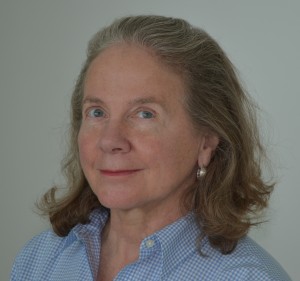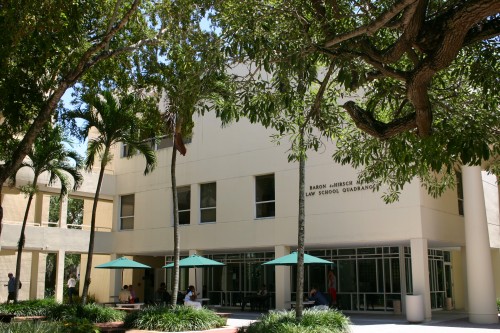 Consider this: What would Aristotle, the fourth-century Greek philosopher, have in common with a successful 21st-century tax lawyer? If your first guess was “nothing,” you were wrong.
Consider this: What would Aristotle, the fourth-century Greek philosopher, have in common with a successful 21st-century tax lawyer? If your first guess was “nothing,” you were wrong.
Philosophers and tax attorneys share an ability to think analytically, to read language critically and to grasp its meaning, to build a logical argument and counter an adversary’s.
That’s the premise of Patricia White, dean of the University of Miami School of Law, who studied both fields at the University of Michigan, earning a master’s degree in philosophy and a juris doctorate in 1974.
The degrees were an integral part of her plan to work in academia, a career path that began with a faculty position at Georgetown University Law Center and included the Sandra Day O’Connor College of Law at Arizona State University, where she was the first woman law dean in the state.
“Knowing how to use principles, argue from principles and come up with counterexamples and having some quantitative capacity associated with logic are things that a good philosopher can do,” White said. “Those are all skills that tax lawyers have.” Indeed, the benefits of philosophical training stretch beyond that field into many types of law, she said, though tax became one of her passions while in school.
She practiced in the field, with stints at Steptoe & Johnson and at Caplin & Drysdale, to gain real-world experience before she began teaching.
“Somebody who was doing philosophy of law or who was teaching tax would be better off, I thought, if they had some real-life experience,” she said. “It had always been the plan to become an academic, but the practice part was something I discovered I should do. I truly loved practice, so it was a good thing.”
Since White began her career in the 1970s, the worlds of both legal practice and legal education have changed significantly, she said. When she was working toward two graduate degrees simultaneously, for example, Michigan was one of only two schools in the United States allowing the practice. “I got no breaks for doing it,” White recalled.
Today, joint and cross-disciplinary degrees are widely available and many schools structure programs to allow students working on multiple degrees to earn them more quickly together than separately. University of Miami School of Law, for instance, offers 18 joint-degree programs some of which combine a juris doctorate with a master’s in business administration, a master’s in communication or a master’s in marine affairs.
“Legal education has changed a lot more than people in the press give it credit for, embracing differences and embracing a variety of ways of doing things,” White said in a telephone interview from the law school. She was named dean there in 2009, after 10 years at Arizona State made her the longest-serving dean in that law school’s history.
LAWDRAGON: Tell us more about the transformation you’ve witnessed in legal education.
PATRICIA WHITE: This has been a time of huge change. There are many more offerings in law school now than there used to be, more subjects that are taught, much greater emphasis on international ramifications and international subjects. The entire subject of intellectual property and all that that entails has grown in this period. Interdisciplinary work, when I started, was highly unusual. I was one of the very first people to be going to graduate school and law school simultaneously. There were no programs anywhere. The notion of specialization, of coming out of law school with specialized degrees, has grown hugely.
Originally, you typically had the basic subjects, which haven’t changed that much, in the first year. You then had many fewer options in the second and third years in law schools generally. Your education was a less specialized education than you now have the option of getting.
Nationally, there were many fewer clinics. Georgetown, where I started teaching, was an early great leader in the field of clinical education and had a lot of clinics for the time, though certainly not as many as it has now. It was unusual among major law schools to have embraced clinical education as fully and successfully as it did.
Now schools all over have, of course, embraced it. Things like externships, which are universal in law schools, didn’t exist. So you had larger classes, typically, because you had fewer classes. The methods of instruction were more uniform than they are now. Now you have sort of traditional forms of instruction, Socratic methods and one exam at the end and casebooks, which are fairly traditional, but you have many alternative methods for instruction; there’s more room for doing things differently.
Law schools have become much more parts of their universities than they were as interdisciplinary work and cross-registration has increased. That’s all for the good.
LD: What are the biggest challenges facing legal education today?
PW: The biggest challenges for all of us right now are being able to maintain the momentum that we as an industry have had for the kind of rich innovation that is occurring in legal education, on the one hand, and the economic constraints that we all face on the other hand.
And we have additional economic constraints because the pool of applicants to law schools has gone down. Numbers of law schools have gotten smaller in terms of the number of students in order to both be responsible as to the number of jobs and to keep the quality of their schools at the level to which they are accustomed. It’s hard to balance all of those things.
LD: Has Miami decreased the size of entering classes?
PW: We’ve very much done that, and it’s not only to maintain the quality of the students, which we have been committed to doing. We also thought that at a time when straightforward legal jobs were reducing, when the market was reducing, it was important that we be sensitive to the supply of lawyers we were putting out there.
We like the size we are; we like the students we have very much and we have great programs, but everything was costed out at a point when the income stream was greater.
We’re all facing this. It’s not just Miami. How we as an industry and as a society address the problem of the cost of education, I think, is a serious challenge. And law schools are a little bit on the cusp, because we’re a three-year graduate program that was typically paid for by the student. That’s unlike Ph.D. programs, which are typically funded by grants and scholarships or labs or fellowships – they haven’t been funded by the students directly – and unlike MBA programs, which are only two years.
We’ve been put in a position where we’re sort of leading, in a bad way, something that is going to become recognized, and I think is becoming recognized, generally, as a problem of how to fund education so that it’s available to people of talent.
Still, you’re much more likely to get a job coming out of law school than certain kinds of undergraduate schools. At least you have a graduate degree. Especially at a good law school, you’ve got a good degree and lots of training that put you in line for certain kinds of things. It may not come as quickly as you think it should, or would like, or used to expect it to happen.
LD: That kind of timetable can be a challenge for graduates saddled with large loan payments and salaries that don’t match. How important is it for law schools to offer reasonable tuition, and how can they accomplish that?
PW: It’s very important and the problem is enormously complex. Institutions, especially private institutions, depend on tuition to finance themselves. The market price of a legal education is high. Students have had increasingly to borrow a large percentage of the cost, and they come out with large debts. Those are facts that can’t be denied.
Just as I said that legal education has become a lot richer and offers more than it used to, well, that’s all come with a cost. Clinics are expensive. Offering a rich variety of courses is expensive. Students expect and demand a high level of attention through student services. That is expensive. Libraries and technology are expensive. International education and opportunities are expensive.
They’re all terrific things and they’re expensive and so the price has gone up. We must figure out models for funding education that allow there to be broad access to educational opportunities without people having to become indebted for the next generation of their lives.
Some people do get very hefty salaries coming out, but those are often not your happiest law students. The people who are happiest with their jobs are often people who are not in the big law firms and are therefore making less money.
The data all show that, of course, over a lifetime and a career, you make a lot more with a law degree than not, but when you have immediate debt, questions of how much you pay and how much debt load you can handle early on depend on repayment schemes. We have had some help with repayment schemes allowing you to be income-based at the beginning: As your income goes up, the amount that you have to pay gets bigger. But that’s not really an easy solution.
It certainly isn’t true across the board that you make a lot of money right away and that the money is going to be able to be repaid right away.
The fundamental problem is that we have to figure out ways of making legal education, or education generally, less expensive while maintaining the kinds of quality and innovation that we want. The answer is to find other kinds of funding sources. It’s not that governments are going to be paying. It’s not that charitable donations are going to be able to pick up all the slack. It’s going to have to come from novel mechanisms of private-public partnership or private educational, commercial enterprises and educational enterprises supporting one another. You see models of that sort in some places.
 LD: The American Bar Association recently made some significant alterations to its accreditation standards for schools offering a J.D. For instance, graduates now have to have six credits from experiential education programs, such as clinics, and they can take up to 15 hours of online courses in a single semester. How do those changes play into the cost dynamic?
LD: The American Bar Association recently made some significant alterations to its accreditation standards for schools offering a J.D. For instance, graduates now have to have six credits from experiential education programs, such as clinics, and they can take up to 15 hours of online courses in a single semester. How do those changes play into the cost dynamic?
PW: The cheapest form of education is to have 100 people in the room and have somebody teaching. On a per-hour basis, the person who’s doing the lecturing is reaching 100 people in that hour, giving you good value for whatever you’re paying. On the other hand, if you’re paying somebody for an hour with five students or six students, as in a clinic, it’s more expensive.
Now you may be getting wonderful results, and one hopes you do, but for some schools that don’t have a lot of clinics, it’s going to present some economic quandaries. If you happen to have, as we do, a lot of wonderful clinics and a robust externship program and a fabulously successful long-term litigation skills program, you’re not going to have to do anything new to meet that requirement. Not all law schools have evolved as we have and have as much in place, and so it’s going to be hard for those schools to put a lot of new things in place during a time of economic constraints.
I, myself, think that legal education ought to include a practical component, an experiential component. One of the reasons we’re so good at it is that we as an institution believe it’s important and we’ve supported it, but it’s not your economically most efficient way of training people.
The other thing that’s going to be very interesting to see is how technology grows. Education generally is working hard and evolving new mechanisms for teaching and using technology. The upfront costs of technology are relatively high, but if you can scale it, it becomes good value.
It used to be the case that you could only take four online credits in a single term and that had implications. If you can take all of your 15 credits in one term, you might be able to have a term where your living expenses were less because you were taking it all remotely. If you saved the cost of rent and shared food, that could make a difference for some people. Now at least, it would be possible for a school to devise a way for that to happen, whereas before, it was not.
LD: You mentioned Miami Law’s experiential programs. Tell us a bit more about what makes the school unique.
PW: Miami is just a fantastic place to study anything that has international dimensions; it really is the “Capital of Latin America.” It has a very large and substantial number of Europeans. It’s a multi-lingual city up and down all the levels of socioeconomic divisions. As a consequence of that, the amount of cross-border work that is done in Miami is huge, so it’s a wonderful place for people who have international interests to come and study and be able to make connections. That’s a real specialty, and a historic specialty, of the University of Miami law school, and it’s been growing by leaps and bounds.
We have a variety of international programs that are unique. At the J.D. level, we have programs studying the globalization of the practice of law and the implications of that. One of our programs is our part-virtual, part-live Law Without Walls program, which involves 30 law and business schools from around the world, some from every continent. We have programs that we do with some European universities where students from both our school and their school take a course together. At the graduate level, we have a Taxation of Cross-Border Investment LL.M. degree, which is offered both virtually and live. Our graduate tax program, which is highly regarded and longstanding, is directed by Patricia Brown, who previously headed the Treasury Department’s international tax treaty program.
We have an international arbitration program, which is the only one in the U.S. and is headed by Jan Paulsson, who is one of the world’s truly great international arbitrators.
We have an Ocean and Coastal Law LL.M. program because we have on our faculty one of the world’s leading law of the sea scholars, and we have here a great marine school in the Rosenstiel school. We have a joint program associated with that school.
Miami is the hub for a lot of entry by sea into the U.S., and we have a lot of immigration scholarship here. We have a really quite wonderful immigration clinic, and our health and elder law clinic also helps with a lot of immigration issues.
We’re very actively involved in issues of immigration policy and actually helping on the ground with immigration issues. We were very much involved after the earthquake with getting temporary protective status for Haitians, and we teach in multiple languages. We also have an international human rights clinic and have done a lot of work in the American courts and the international courts.
LD: What do you do outside the law school, when you’re not working?
PW: Swimming, boating, hiking, reading, traveling and wine; all the pleasures of life. I enjoy my husband and grown children. We’re a very international family, with children in Beijing, the Netherlands, London, San Francisco and Saratoga Springs, N.Y., so we have lots of excuses to go to lots of very nice places. We were just on vacation in South Africa and took a one-week safari to Botswana, which was fantastic.
Contact James Langford at (646) 722-2624 or james@lawdragon.com.

